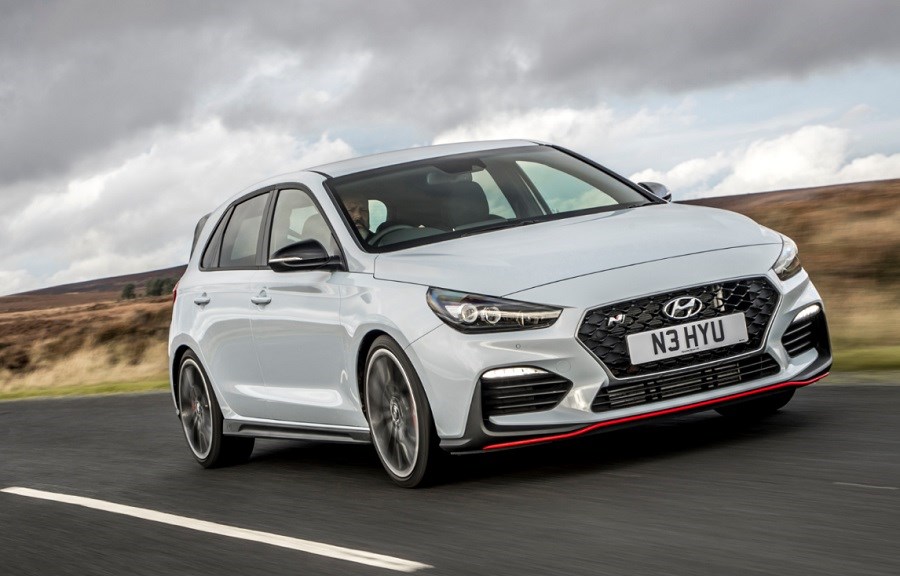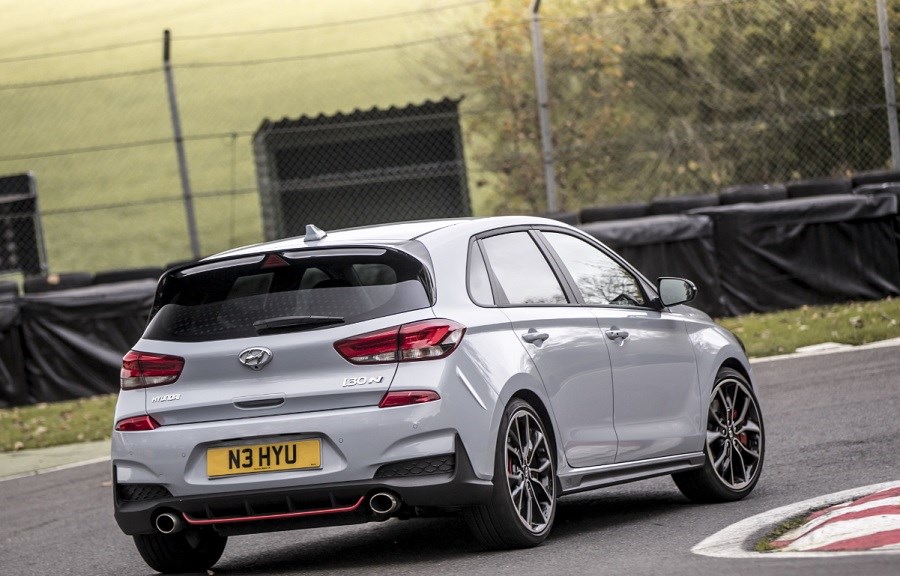Model Review
In order to hone its model range for the dynamic requirements of European roads, Hyundai pulled off an ambitious coup by recruiting former BMW M Division vice president, Albert Biermann to head up its chassis engineering team.
Cheekily called the N-Division (a natural and alphabetical successor to ‘M’ ) the cars are drawn-up and developed at Hyundai’s design and engineering HQ in Ruesselsheim, Germany, just across the road from Vauxhall-Opel’s German headquarters - another rich vein of automotive expertise into which the Korean company has tapped into with its recruitment strategy.
The i30N then is the N-Division’s first car. A hot hatch, and one that by rights, should be regarded as a worthy first attempt. But it’s a lot more than that. So much more…
Latest model
The i30N is a 2.0-litre turbocharged hot hatchback, with either 247bhp or 271bhp on tap.
The engine is based on the familiar 2.0-turbo GDi unit found in models such as the i40 and Tucson, but don’t mistake it for a standard 2.0-litre unit that has just had its wick turned up, as it’s far more sophisticated than that.
As part of the ‘N-Division’ tuning, the i30N gets a series of selectable drive modes, operated via a thumb-switch on the steering wheel.
This operates the computer-controlled suspension, along with an electronic limited-slip differential, variable-valve exhaust timing, torque vectoring and launch control.
Still not convinced? How about if we told you that the vast majority of the i30N’s chassis development took place at the legendary Nurburgring circuit in Germany, or that the hot hatch could sprint from 0-60mph in just 5.9 seconds?
Yes, this is a genuine hot hatch.
Value for money
There are yet more bonuses, as the £25,760 i30N undercuts the VW Golf GTi by more than £2,000 and the Honda Civic Type R by over £5,000. Yet it isn’t outshone by either of them although it is equally as good, but cheaper — what’s not to like?
The i30N is inarguably one of the best value performance cars on the market today and used values have remained high from the model, something not often observed from Hyundais.
Looks and image
Whilst Hyundai is hardly an iconic name in performance car circles, the i30N is a car that deserves to change that. So, while the Hyundai doesn’t quite have the keyring factor of a Golf GTi or Civic Type R, it won’t be long (we don’t think) until Hyundai N Division becomes a thing of its own, not least because there are so many other models in the company’s range that are ripe for development.
So how about the looks? Well, the i30N is a sharp-looking car, and while performance car purists may turn their noses up at the Hyundai badge, there’s absolutely nothing wrong with the car’s handsome body.
The performance mods are subtle yet effective, with a deep front splitter, mesh grille and subtle ‘N’ badging, along with a subtle red chin stripe and matching brake callipers.
At the back, the rear bumper also has a thin red stripe, along with twin exhaust pipes and a rear diffuser. It’s not an ‘in-your-face’ package like the Honda Civic Type R, but in many ways the i30N is all the better for it.
Space and practicality
Aside from the sports seats and chunky flat-bottomed steering wheel, the i30N is as conventional as a mainstream i30.
That means it gets a cabin that, while not as sporting as it could be, is perfectly suited to transporting four adults. If you wanted it to, it could certainly be a viable family car which is an argument helped by the fact it has excellent safety kit as well. Autonomous emergency braking and driver alertness assistance are both included.
The boot is generous enough, which also helps with the justification needed to make it a family car, while the eight-inch smartphone mirroring touchscreen is among the best on the market.
The only criticism we have is that the interior has a few harsh plastics and lacks the sense of occasion of some more high-profile hot hatchbacks. It’s a minor criticism against an otherwise excellent package.
Engines
The 2.0-litre turbocharged GDI engine comes in two power outputs — 247 and 271bhp, the difference dictated by turbo pressure.
The 271bhp unit is offered only on ‘N Performance’ versions, whereas the standard i30N gets the 247bhp engine.
Both are lively and feature launch control and rev matching, along with adjustable suspension and power delivery settings. The least potent engine allows a 0-60mph time of 6.1 seconds and a top speed of 155mph, which is electronically limited. The more powerful unit does 0-60mph in 5.3 seconds, with the same limited top speed.
On both variants, the turbo features an overboost function that temporarily increases power output by around eight per cent, whilst active torque vectoring allows the limited slip differential to distribute power between the front wheels at varied levels —a technology more commonly employed in all-wheel-drive models, but used to great effect in the i30N.
Incidentally, the 271bhp model comes with 19-inch alloy wheels as standard, and these tend to amplify the torque steer that the torque vectoring works to compensate. The less powerful version on its 18-inch rims is, if anything, a more precise driver’s car.
Things to look for
The i30N is too new to have thrown up any major problems, though the model’s specially-designed Michelin Sports Pilot tyres are unique and have to be ordered through Hyundai dealers. They tend to wear out quickly, too, especially at the front. If you’re looking at a nearly new or recent used model, this should be the first thing you check out, or you may cop for an unexpected £400 bill.
Rivals
The two key rivals for the i30N are the VW Golf GTi and the Honda Civic Type R, and while each of them has individual things it does better than the Hyundai, the Korean car makes the best case for itself as an all-rounder.
Others to consider are the Skoda Octavia vRS, Mini Cooper S, BMW M140i and Seat Leon Cupra.
Depreciation
It’s too early to accurately assess how the i30N will depreciate, but the model appears to have already developed something of a cult following, meaning that it’s likely to retain its value reasonably well.
Even so, its lower new list price means it will probably still be a bargain compared to its rivals on the used market.





